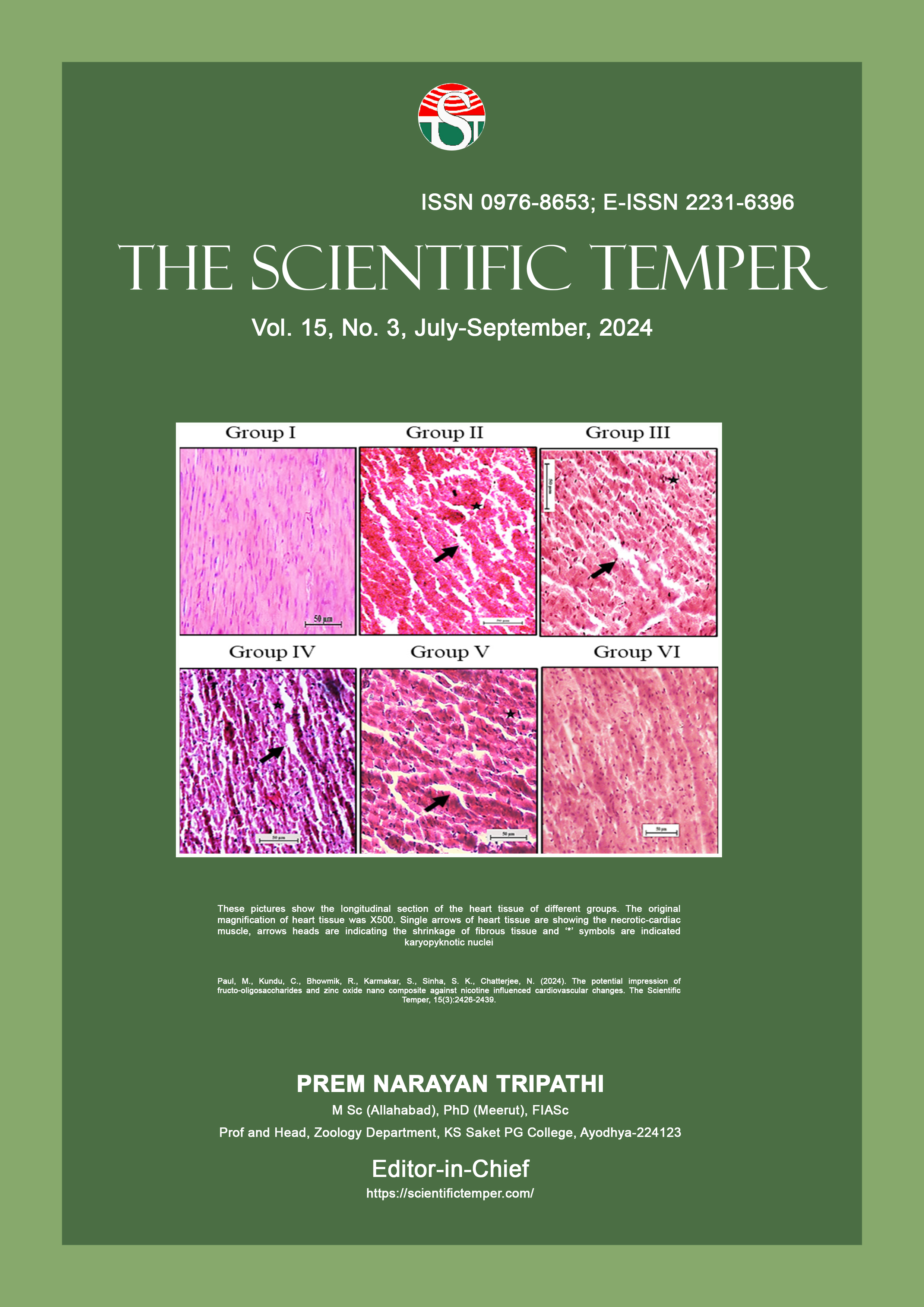An optimized cardiac risk levels classifier based on GMM with min- max model from photoplethysmography signals
Downloads
Published
DOI:
https://doi.org/10.58414/SCIENTIFICTEMPER.2024.15.3.70Keywords:
Gaussian mixture model, Min-max decision model, Cardiovascular disease, Photoplethysmography, Singular value decomposition.Dimensions Badge
Issue
Section
License
Copyright (c) 2024 The Scientific Temper

This work is licensed under a Creative Commons Attribution-NonCommercial-ShareAlike 4.0 International License.
As per a latest study, coronary artery disease and hemorrhagic stroke are the predominant factors contributing to over 80% of cardiovascular diseases (CVDs). To reduce the mortality rate due to CVDs, researches are proposing the techniques for early detection of these CVDs. For the preliminary investigation on cardiovascular disease Photoplethysmography (PPG) can be used. Using PPG signals, it is possible to infer the risk levels like CVD with low risk, CVD with medium risk and respiratory disorder. To classify the risk levels of CVD, a model incorporating Gaussian mixture model (GMM) classifier with min-max decision model has been implemented. The proposed model resulted in better performance than existing classifiers like Logistic regression-GMM (LR-GMM), Detrend fluctuation analysis (DFA) and Cuckoo search algorithm (CSA) using min-max model. Based on the results GMM reflects a peak 95.9% classification accuracy with minimal false alarm of 7.1% and 0.99% miss classification when compared to other post classifiers.Abstract
How to Cite
Downloads
Similar Articles
- P S Renjeni, B Senthilkumaran, Ramalingam Sugumar, L. Jaya Singh Dhas, Gaussian kernelized transformer learning model for brain tumor risk factor identification and disease diagnosis , The Scientific Temper: Vol. 16 No. 02 (2025): The Scientific Temper
- S. TAMIL FATHIMA, K. FATHIMA BIBI, Early diagnosis of cardiac disease using Xgboost ensemble voting-based feature selection, based lightweight recurrent neural network approach , The Scientific Temper: Vol. 16 No. 06 (2025): The Scientific Temper
- Bommaiah Boya, Premara Devaraju, Integrating clinical and ECG data for heart disease prediction: A hybrid deep learning approach based on two modalities with particle swarm optimization , The Scientific Temper: Vol. 16 No. 05 (2025): The Scientific Temper
- Temesgen A. Asfaw, Batch size impact on enset leaf disease detection , The Scientific Temper: Vol. 15 No. 01 (2024): The Scientific Temper
- Sowmiya M, Banu Rekha B, Malar E, Ensemble classifiers with hybrid feature selection approach for diagnosis of coronary artery disease , The Scientific Temper: Vol. 14 No. 03 (2023): The Scientific Temper
- Deepa S, Sripriya T, Radhika M, Jeneetha J. J, Experimental evaluation of artificial intelligence assisted heart disease prediction using deep learning principle , The Scientific Temper: Vol. 14 No. 04 (2023): The Scientific Temper
- Olivia C. Gold, Jayasimman Lawrence, Ensemble of CatBoost and neural networks with hybrid feature selection for enhanced heart disease prediction , The Scientific Temper: Vol. 15 No. 04 (2024): The Scientific Temper
- R. Sivakumar, S. Vijaya, Eco-epidemiology of prey and competitive predator species in the SEI model , The Scientific Temper: Vol. 15 No. spl-2 (2024): The Scientific Temper
- S. Vanaja, Hari Ganesh S, Application of data mining and machine learning approaches in the prediction of heart disease – A literature survey , The Scientific Temper: Vol. 15 No. spl-1 (2024): The Scientific Temper
- Y. Mohammed Iqbal, M. Mohamed Surputheen, S. Peerbasha, Swarm intelligence-driven HC2NN model for optimized COVID-19 detection using lung imaging , The Scientific Temper: Vol. 16 No. 03 (2025): The Scientific Temper
You may also start an advanced similarity search for this article.



